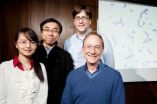(Press-News.org) WEST LAFAYETTE, Ind. - California policies aimed at reducing electricity use and curbing greenhouse gas emissions have the unintended consequence of making new plug-in hybrid vehicles uneconomical, according to a Purdue University economist.
Wally Tyner, the James and Lois Ackerman Professor of Agricultural Economics, said California's tiered electricity pricing system means Californians will pay some of the highest electricity rates in the country to recharge plug-in hybrid vehicles. States with flat electricity rates or those that vary price based on the time of use are more economical, according to Tyner's study.
In tiered systems, consumers pay a higher rate for electricity they use beyond a certain amount. California has three rate tiers. It also has a time-of-use system, which reduces the rate during periods of low demand. In addition, Californians pay some of the highest electricity rates - an average of 14.42 cents per kilowatt hour, which is about 35 percent higher than the national average.
"The objective of a tiered pricing system is to discourage consumption. It's meant to get you to think about turning off your lights and conserving electricity. In California, the unintended consequence is that plug-in hybrid cars won't be economical under this system," said Tyner, whose findings were published in the early online version of the journal Energy Policy. "Almost everyone in California reaches the third pricing tier each month. If they add a plug-in hybrid, they are charged the highest rate."
Tyner worked with Purdue researchers Farzad Taheripour, an energy economist in Purdue's Department of Agricultural Economics; Joseph F. Pekny, a professor of chemical engineering; Gintaras V. Reklaitis, the Burton and Kathryn Gedge Distinguished Professor of Chemical Engineering; and Shisheng Huang and Bri-Mathias S. Hodge, graduate research assistants in chemical engineering, to develop a model that would simulate energy use by Californians. They analyzed U.S. Census data to determine types of appliances each household would use. The model closely aligned with actual energy use in California.
Adding a plug-in hybrid would increase the average use of electricity nearly 60 percent per household, according to the findings. In California, most of that increase would be charged at the highest rate.
Tyner said states such as Indiana, which charges a flat rate of about 8 cents per kilowatt hour, would be more economical. Those that employ time-of-use rates would be the most economical because the lower nightly rates would coincide with when people are most likely to charge their cars.
"If you have time-of-use pricing, you have the opportunity to charge the car at the lowest available price," Tyner said.
Tyner said California could change its rate system or issue extra electricity meters for charging cars on flat rates.
California was chosen to study because, given the fact that it is often at the leading edge of energy conservation policy and practices, plug-in hybrids are expected to be popular there. For the simulations, researchers compared the Chevrolet Volt with the Toyota Prius and Chevy Cobalt to estimate relative economics of the alternatives.
The researchers determined the plug-in hybrid would be less economical than the Toyota Prius, a hybrid that does not charge its battery through a plug, or the Chevrolet Cobalt, which uses only an internal combustion engine. When oil prices are high, the Prius would be the most economical, with the advantage going to the Cobalt when oil prices are low.
Tyner said to make the Volt more economical than either the Prius or the Cobalt, oil prices would have to rise to between $171 and $254 per barrel, depending on which electricity pricing system is being used. That's because the Volt has a higher purchase price and will cost more in electricity than gasoline over the life of the vehicle.
The simulations accounted for a $7,500 federal rebate to consumers for purchasing plug-in hybrids. Tyner said electricity costs would have to decrease to allow the plug-in hybrids to compete.
"People who view the Volt as green will pay $10,000 more over the lifetime of the car because it's green," Tyner said. "Most consumers will look at the numbers and won't pay that."
INFORMATION:
Purdue's Center for Research on Energy Systems and Policy funded the research.
Writer: Brian Wallheimer, 765-496-2050, bwallhei@purdue.edu
Source: Wally Tyner, 765-494-0199, wtyner@purdue.edu
PHOTO:
Wally Tyner - http://www.purdue.edu/uns/images/2010/tyner-w10.jpg
Abstract on the research in this release is available at: http://www.purdue.edu/newsroom/research/2011/110113TynerHybrids.html
Electricity pricing policies may make or break plug-in hybrid buys
2011-01-14
ELSE PRESS RELEASES FROM THIS DATE:
Next-generation hospital design can improve health -- and save money
2011-01-14
(Garrison, NY) Extra large private hospital rooms with plenty of natural light and artwork may seem like unaffordable luxuries, but new research shows that these and other architecture and design features can improve patient care and in the long run reduce health care expenses. They are among the elements of the "Fable hospital," an ideal health care facility as conceived and analyzed by leaders in health care and design. Elements of the Fable hospital are being adopted on the ground today, with the imperative to improve quality and value.
A set of articles in the Hastings ...
Driving simulators help older adults improve their road skills
2011-01-14
Older drivers could benefit from training programs that put them behind the wheel—in a driving simulator, with an observer who helps them develop their skills. That's the conclusion of a new article published in Current Directions in Psychological Science, a journal of the Association for Psychological Science.
Older people are at much higher risk of car crashes than younger drivers. Some states and provinces test older drivers, hoping to get the riskiest drivers off the road. But the tests they use are inadequate, says Normand Teasdale of Université Laval in Québec, ...
Self-assembling structures open door to new class of materials
2011-01-14
CHAMPAIGN, Ill. — Researchers at the University of Illinois and Northwestern University have demonstrated bio-inspired structures that self-assemble from simple building blocks: spheres.
The helical "supermolecules" are made of tiny colloid balls instead of atoms or molecules. Similar methods could be used to make new materials with the functionality of complex colloidal molecules. The team will publish its findings in the Jan. 14 issue of the journal Science.
"We can now make a whole new class of smart materials, which opens the door to new functionality that we couldn't ...
More than 31 freshwater species have 'moved' to Galicia over past century
2011-01-14
Galician researchers have studied the evolution in the introduction of non-native fresh water species in Galicia over the past century, and have compared this with the rest of the Iberian Peninsula. The results show that 31 exotic aquatic species out of the 88 recorded for the entire Iberian Peninsula have become established in the region over the past century.
An analysis of the introduction of non-native species in Galicia and the Iberian Peninsula carried out by researchers from the University of Santiago de Compostela (USC) and the University of Coruña (UDC) has shown ...
Scientists sequence gut microbes of premature infant
2011-01-14
Scientists have for the first time sequenced and reconstructed the genomes of most of the microbes in the gut of a premature newborn and documented how the microbe populations changed over time.
Further studies involving more infants could eventually help researchers understand the causes of various intestinal problems that afflict preemies, in particular the sometimes fatal necrotizing enterocolitis, according to researchers at the University of California, Berkeley, the University of Pittsburgh School of Medicine and Stanford University. One unresolved question is whether ...
MIT neuroscientists explain 'Proustian effect' of small details attached to big memories
2011-01-14
CAMBRIDGE, Mass. – Neuroscientists at MIT's Picower Institute of Learning and Memory have uncovered why relatively minor details of an episode are sometimes inexplicably linked to long-term memories. The work is slated to appear in the Jan. 13 issue of Neuron.
"Our finding explains, at least partially, why seemingly irrelevant information like the color of the shirt of an important person is remembered as vividly as more significant information such as the person's impressive remark when you recall an episode of meeting this person," said co-author Susumu Tonegawa, Picower ...
Breaking point: LSU professor discovers method to determine when metals reach end of life
2011-01-14
BATON ROUGE – We live in a world almost completely dependent upon machinery. Since the creation of the simple wheel, humans have found ways to increase quality of life and advance scientific knowledge using these devices. Though the prevalence of machinery has allowed us to build bigger, travel faster and create more quickly with complexity increasing as science advances, our dependence upon them has limitations. Everything that moves can and will break, especially metals under strain. And when they fail, the consequences can be catastrophic. LSU's Michael Khonsari has ...
The best way to measure dark energy just got better
2011-01-14
Dark energy is a mysterious force that pervades all space, acting as a "push" to accelerate the Universe's expansion. Despite being 70 percent of the Universe, dark energy was only discovered in 1998 by two teams observing Type Ia supernovae. A Type 1a supernova is a cataclysmic explosion of a white dwarf star.
These supernovae are currently the best way to measure dark energy because they are visible across intergalactic space. Also, they can function as "standard candles" in distant galaxies since the intrinsic brightness is known. Just as drivers estimate the distance ...
AGU journal highlights -- Jan. 13, 2011
2011-01-14
The following highlights summarize research papers that have been recently published in Geophysical Research Letters (GRL).
In this release:
Spooky action at a distance, for earthquakes
Evidence for water ice near the Martian equator
Extraordinary uplift of Yellowstone caldera
New evidence could let supereruption off the hook
Auroral oscillations seen on Saturn
How much sea-level rise can coastal marshes withstand?
Rain affects carbon-dioxide flow between sky and sea
Ionosphere model overshoots during solar minimum
Anyone may read the scientific abstract for ...
Cattle health and welfare at the heart of K-State research
2011-01-14
MANHATTAN, KAN. -- At any given time between 10 and 20 percent of cattle in the United States are afflicted with lameness, making it one of the most common ailments affecting feedlot and stocker calves.
That's why a Kansas State University research team is working to reduce the percentage of cattle affected by bovine lameness.
Three researchers -- David Anderson, professor of clinical sciences; Brad White, associate professor of clinical sciences; and Johann Coetzee, associate professor of clinical sciences -- are involved with bovine pain and welfare assessment at ...


